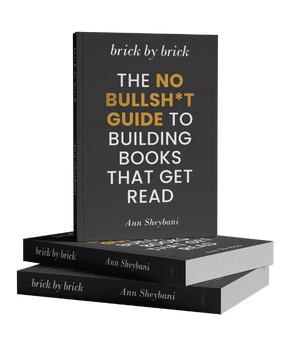In 2014, Naval Admiral William H. McRaven gave the University of Texas Austin commencement address. It was a twenty-minute speech that outlined ten principles he’d learned during Naval SEAL training. These principles helped him overcome challenges, not only in his training and long naval career, but also throughout his life.
Someone in the audience that day thought to film the speech and throw it up on Youtube. Within short order, the video went viral with over five million views. (I totally loved it.) Hatchette Book Group, one of the Big Six publishing houses, signed the Admiral to a book deal the minute they recognized his ginormous following. (More likely, they won a bidding war to publish the book, but I digress.) The 100-page book, recently out on the market, is called Make Your Bed, after the single line that seemed to resonate most with his audience. (Give people what they want.)
If you’re a speaker and want to turn your own twenty-minute talk into a full-length manuscript, I’m going to break this book down into its component elements so you can model this successful formula for yourself.
Here’s what this lovely, readable book is comprised of:
- A Table of Contents listing ten chapters
- A two-page Preface that mentions the fateful commencement address, the Admiral’s surprise at the attention it garnered, and a rough overview of the book. Super short, super simple.
- A single chapter for each of the ten principles mentioned in that speech, seven to ten pages long-ish.
- A transcript of the 2014 commencement speech. The speech isn’t front and center, as you might expect; it’s located in the back of the book, almost as an afterthought. You’ll notice that each of the principles is set off in italics for easy tracking.
Now, this is the breakdown for each chapter. Notice the lovely little formula, the constraints:
- A title page, which names a single clear principle that anyone can understand. i.e. Start Your Day with a Task Completed
- A page with a single line that translates that clear principle into SEAL talk, that uses the very same language that the Admiral used in his speech. i.e. start off by making your bed. On this page is an icon as well, a sort of graphic design, a symbol. In this example, a bed. Nice touch.
- The body of each chapter begins with a story set during SEAL training. The story dramatizes the very moment when the Admiral first ran into the associated principle. (Jesus, Basic training sounds like a nightmare on Elm Street.)
- Next comes a half-inch line that denotes a shift in time.
- Then we have a second story, this time set during the Admiral’s subsequent military career, when he is reminded of this principle once again. This is how that principle can be applied in “real life” settings, albeit in strictly military settings. (We never see how this principle shows up in the Admiral’s private life; we keep the focus on his experience as a commander of men. We want to stick with the Admiral, the guy in the white uniform that captured our imagination, that’s got the platform, not the guy flipping burgers on the backyard barbeque as nice as he might be.)
- We have a reiteration of the principle in SEAL talk before we exit the second story and end the chapter.
Now, if you have a book and want to convert it into a speech, you’ll want to underline the six to ten primary lessons you cover, then support each one with a single story you’ve boiled down to its core essence. You’ll have zero room for fluff.
Even if you’d rather stick a hot poker in your eye than write a book, you’re going to want to read Make Your Bed. It’s incredibly eye-opening. (Pun intended)
By the way, my favorite principle is outlined in Chapter Four: Life’s Not Fair—Drive On!
Tell me about it.


